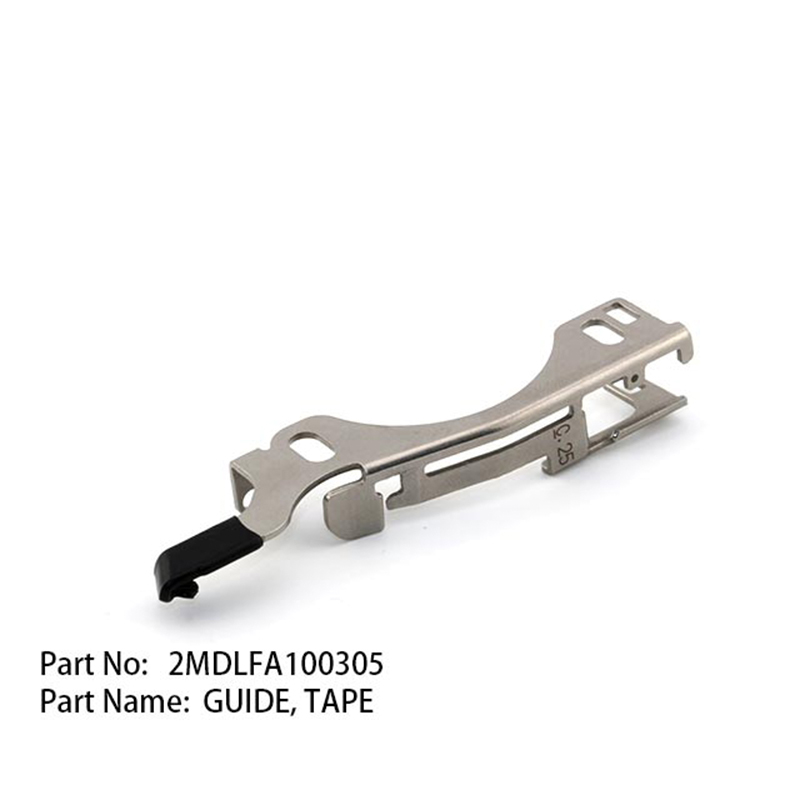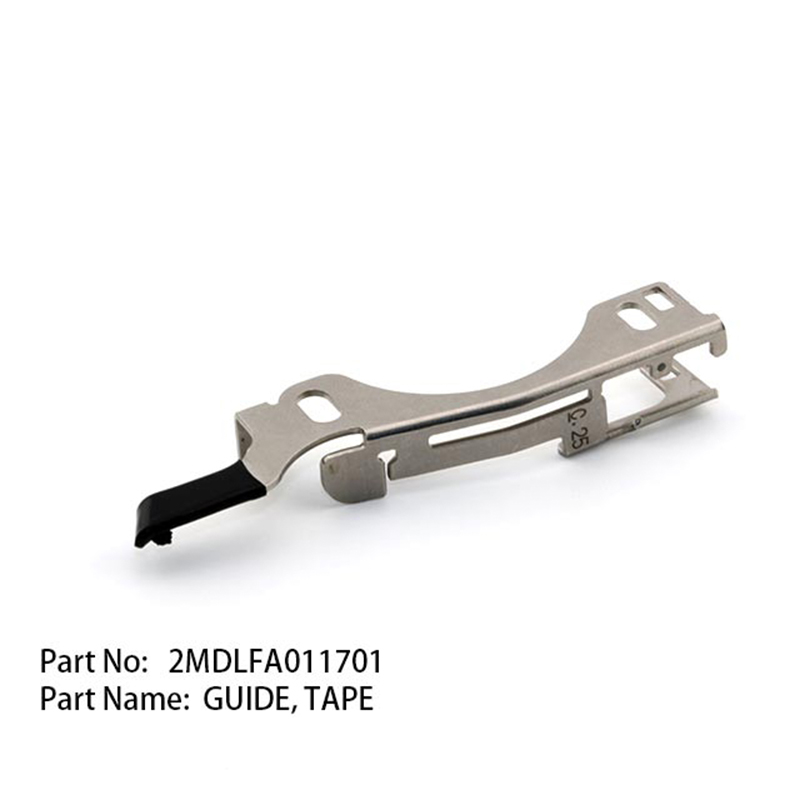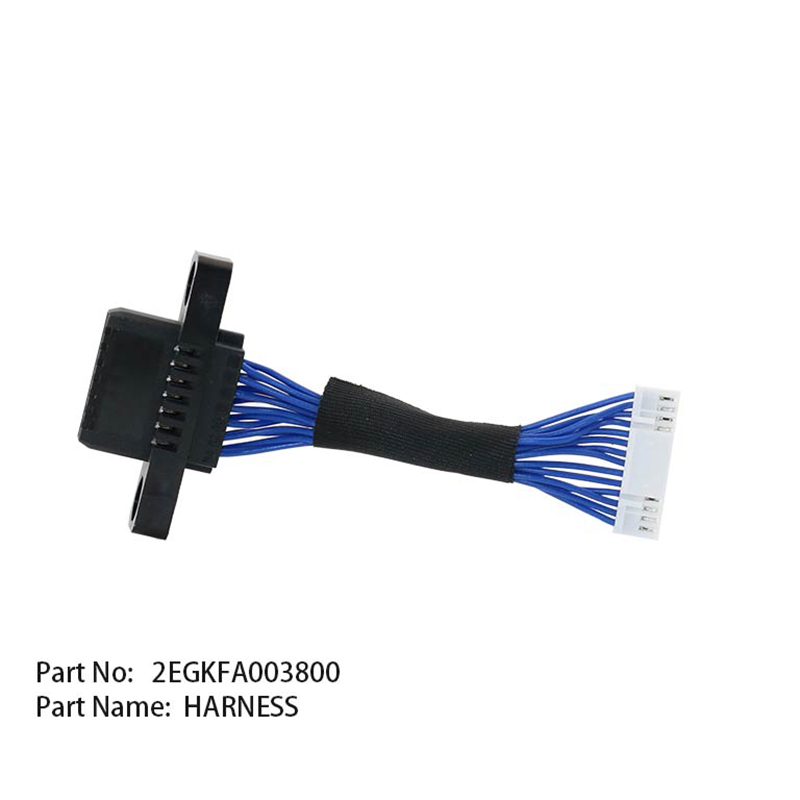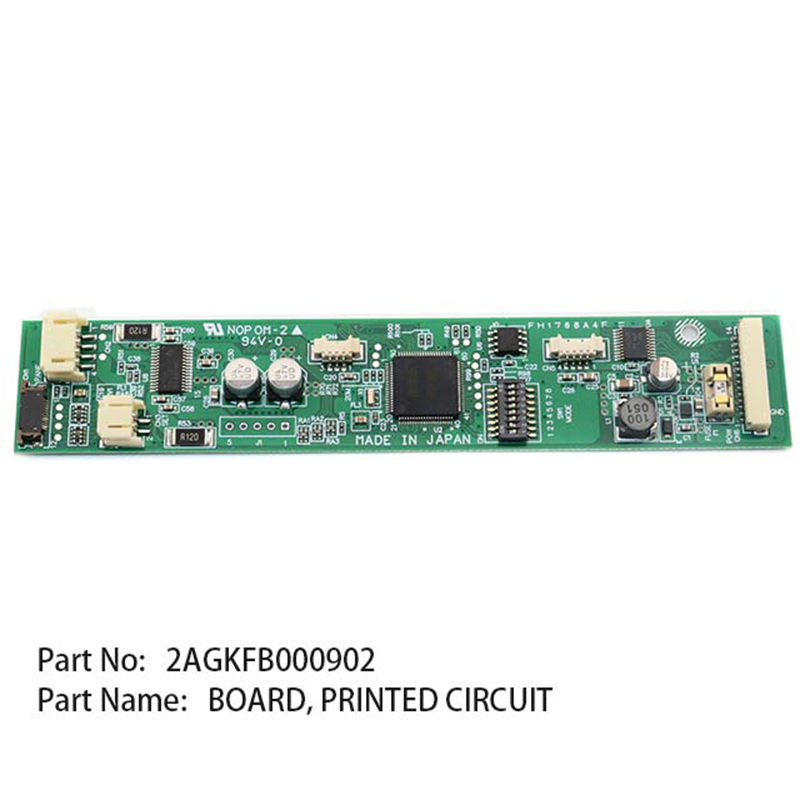SMT Feeders and Accessories: The Precision Engine and Efficiency Cornerstone of Electronics Manufacturing
Release Time : 2025-09-10
In the highly automated electronics manufacturing industry, surface mount technology (SMT) has become a core process in PCB assembly. SMT feeders and their accessories serve as the bridge between component storage and precise placement, and their performance directly impacts production efficiency, yield, and equipment stability. This article will analyze the core value of this precision system from four perspectives: technical principles, core types, key accessories, and industry trends.
1. Technical Principles: Closed-Loop Control from Component Storage to Precision Delivery
The core function of SMT feeders is to deliver electronic components (such as resistors, capacitors, and ICs) in various packaging formats at a fixed pitch and orientation to the fixed pickup position of the placement machine's nozzle. Their operating principle involves three major systems: mechanical transmission, sensor detection, and servo control:
Mechanical transmission: A stepper motor drives gears or belts to achieve precise stepping of the component tape. For example, a tape feeder uses sprockets to engage with positioning holes in the component tape, controlling component movement with millimeter-level accuracy.
Sensor Detection: A photoelectric sensor monitors component position in real time. When a component reaches the pickup point, a locking mechanism is triggered to secure the component tape, preventing displacement when the SMT nozzle is pressed down.
Servo Control: Communicating in real time with the SMT machine's main control system, the feeder dynamically adjusts feed speed and direction based on PCB design data to ensure synchronization between component pickup and placement.
Taking the FUJI NXT series feeders as an example, their dual-servo motor drive design achieves 0.1mm positioning accuracy. Combined with an intelligent pressure sensor, they automatically compensate for component thickness variations, preventing nozzle collisions or missed pickups.
2.Core Type: Precision Toolbox for Multiple Components
Based on component packaging, SMT feeders are primarily divided into four categories, each optimized for specific applications:
Tape Feeder
Applications: Micro-sized SMT components such as 0402 and 0603, as well as standard packaged devices such as LEDs and diodes.
Technical Highlights: Supports component tapes with widths ranging from 8mm to 104mm. Select models feature automatic reloading, reducing manual intervention. For example, the Sony SI-G series electric feeder uses a magnetic encoder for closed-loop control, reducing reloading time to less than 3 seconds.
Data Support: Statistics from a consumer electronics manufacturer show that after adopting high-precision tape feeders, component leakage rates decreased from 0.5% to 0.02%, increasing single-line productivity by 15%.
Tray Feeder
Application Scenario: Large ICs such as BGAs and QFPs, as well as special-shaped components (such as connectors and sensors).
Technical Highlights: Precise tray positioning is achieved through an X-Y servo platform, supporting stacking of trays of various sizes. For example, the Panasonic CM602 series tray feeder can simultaneously accommodate eight different components, with a changeover time of just 10 seconds.
Case Study: After adopting a tray feeder, an automotive electronics manufacturer reduced BGA component placement offset from ±0.1mm to ±0.03mm, meeting automotive-grade reliability requirements. Vibration Feeder
Applications: Cylindrical or rectangular non-polarized components such as MELF and SOIC.
Technical Highlights: Electromagnetic vibration is used to align components along a spiral track, with a vision system providing directional correction. For example, the JUKI KE-2080 series vibration feeder can handle components ranging from 0.6mm to 12mm in length, with a feeding rate of up to 12,000 components per hour (CPH).
Efficiency Comparison: Compared to manual placement, vibration feeders increase MELF resistor placement efficiency by 20 times and reduce labor costs by 80%.
Tube Feeder
Applications: Small-batch trial production or specialized components (such as crystal oscillators and inductors).
Technical Highlights: Components are moved within the tube using gravity or air pressure, with mechanical stops providing positioning. For example, the Samsung SM482 series tube feeder supports tube diameters from 1.8mm to 15mm, with tube changes taking just 2 seconds.
Flexibility: Tube feeders can be quickly adapted to different components, reducing equipment investment during the pilot production phase.
3. Key Accessories: The Invisible Guardian of System Stability
In addition to the main feeder, the following accessories are crucial for improving SMT line efficiency:
Feeder Cart
Function: Centralizes feeder storage and transportation, reducing changeover time. For example, the Neoden CL series cart features a modular design and can accommodate 48 8mm feeders. With its quick-plug connector, changeover time is reduced to 5 minutes per line.
Data Support: After introducing feeder carts, one EMS manufacturer reduced line changeover downtime from 45 minutes per shift to 15 minutes per shift, improving Overall Equipment Effectiveness (OEE) by 12%.
Calibration Jig
Function: Calibrates feeder accuracy using laser positioning or a vision system. For example, the Siemens SIPLACE calibration jig detects feeder step errors and automatically generates compensation parameters to ensure component pickup position deviations are within 0.05mm.
Case Study: After a medical electronics manufacturer regularly used calibration tools to maintain its equipment, its PCB defect rate dropped from 0.3% to 0.05%, saving over 500,000 yuan in annual rework costs.
Spare Parts Kit
Contents: Contains consumable parts such as gears, belts, and sensors, shortening repair time. For example, the FUJI NXT spare parts kit covers 90% of common fault points, allowing maintenance personnel to complete replacements within 10 minutes.
ROI Analysis: Statistics from a communications equipment manufacturer show that using spare parts kits increased the mean time between failures (MTBF) of equipment from 800 hours to 1,200 hours, reducing annual maintenance costs by 35%.
4. Industry Trends: The Two-Way Path to Intelligence and Flexibility
As electronics manufacturing shifts toward a "small batch, high variety, fast delivery" model, SMT feeder technology is exhibiting the following development trends:
Intelligent Upgrades: Integrating AI vision and big data analytics to enable real-time monitoring and adaptive adjustments during the feeding process. For example, the ASM SMT intelligent feeder can automatically identify component directional deviations and dynamically compensate through servo motors, increasing placement yield to 99.99%.
Flexible Design: Developing universal feeders compatible with various component packaging formats. For example, the Yamaha YRi-V series feeder supports switching between tape, tray, and tube formats, reducing changeover time from 30 minutes to 5 minutes.
Green Manufacturing: Utilizing lightweight materials and low-power designs reduces carbon emissions. For example, Panasonic's latest generation of feeders is 40% lighter and uses 25% less energy, meeting EU ERP energy efficiency standards.
A "Hidden Champion" in Precision Manufacturing
SMT feeders and their accessories serve as the "capillaries" of electronics manufacturing, and their technological evolution is directly driving leaps in efficiency and quality. From millimeter-level positioning accuracy to sub-second changeover speeds, and from single-function to intelligent flexibility, technological innovations in this field are continuously reshaping the future of PCB assembly. For manufacturers, choosing a feeder system that suits their needs is not only the key to improving competitiveness, but also the only way to move towards Industry 4.0.







